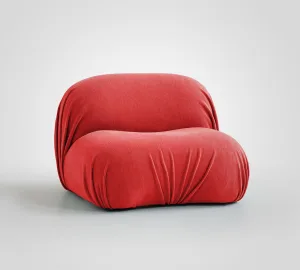From leisurely breakfasts to lavish dinner parties and game nights, life unfolds in the dining room in a variety of ways. For a very long time, chairs and tables have been playing matchy-matchy, which has made dining sets not only predictable but also pricey. Open-concept homes and mix-and-match tendencies of today, however, have violated this tradition and put buyers in a tizzy. Can you match that charming rustic farm table with a modern, geometrically shaped chair? Can you have pets at home and yet risk plush seating? Will that low-back chair you have your eye on be cosy enough? There are many possibilities, but the rules are simple.
1. Size Considerations
The dining room ought to be an easy-movement area, as it is a busy space. Therefore, go for chairs that can be easily slipped under the dining table. A distance of at least 12 inches between the tabletop and dining chair seat offers comfortable seating and enough legroom. Use the seat or backrest of the dining chair to gauge its breadth. Avoid anything smaller than 17 inches by 20 inches for an armless dining chair. Armless chairs offer maximum comfort when they are 22 inches broad and 24 inches deep.
2. Matching Style with Lifestyle
When selecting dining chairs, take into account how they will fit into your lifestyle. Do you regularly throw elaborate banquets in your home? Or do you prefer to eat in a relaxed, casual setting? Your choice of dining chairs can readily represent your lifestyle.
Low-back chairs are a simple way to create a casual atmosphere, while high-back chairs set the tone for formal gatherings. Additionally, chairs with delicate designs or open backs allow for longer sightlines, enlarging the appearance of a tiny dining area. Similar to this, huge, clearly defined chairs work well in spacious areas. This general rule applies to all themes, whether they are classic, modern, minimalist, or anything else.
Alternately, you may use lavish end chairs along with simple side chairs to strike a middle ground. This creates a semi-formal atmosphere and is inexpensive.
3. Mix it Up
The current trend is for dining chairs to complement dining tables rather than match them. It sounds challenging, but the trick is to find a common element – colour, shape, style, height, leg style, or material – that ties the chairs together or connects them with the dining table. For instance, if painted the same colour or covered in the same material, two mismatched geometric chairs can be combined.
If you are a lover of any one particular material and colour, say metal painted white, invest in a set of chairs with various backrest designs. You can even easily transition between different furniture eras. If antique tables have legs that are of a similar design, they might look lovely with mid-century contemporary furniture.
4. Easy to Move
It is always suggested to have dining chairs that you can move around the house effortlessly. This is especially crucial if they are performing two jobs. When hosting guests, they could be used as additional seating in the living area, and they might also be used in your home office.
Chairs with open backrests can provide support while reducing visual clutter. Slat-back or plastic-molded chairs offer a comfortable grasp when entering and exiting the dining area, and they are a simple solution for children and animals as well. It is more difficult to manoeuvre chairs with solid backs or that are heavy-set. However, it’s crucial to keep in mind to avoid choosing seats that dig into people’s backs. You may select chairs with part-upholstered tops that are easy to take up with the elbow.
5. Durable Structures
Chairs should be stable and not sway under tension, regardless of the material they are made of. This is particularly important if you’re choosing antique furniture.
Wooden dining chairs are a popular choice because they are as durable as metal ones. Chairs manufactured by competent artisans utilising conventional joinery are probably going to survive longer. A definite no to glued parts, splinters, and snags. Use the same logic even if you decide to use a wooden bench for sitting rather than individual chairs.
6. Easy Maintenance
If you have pets or kids, your dining chairs are bound to face a lot of wear and tear. In such cases, chairs without upholstery or with little fabric are ideal since they are simple to clean.
Sunbrella textiles, cotton blends, and bonded or tufted leather are simple to clean and attractive too. Drool or food stains, and worse can be easily wiped off. But if you truly must have something made of delicate materials like chenille or velvet, invest in slipcovers that are simple to remove and clean as required. A medium to dark colour works well for hiding stains as well.
Since wood is the most sought-after material for dining chairs, it’s crucial to keep in mind that, despite being simple to clean, wood ages and changes colour. Additionally, spills must be cleaned up promptly, as they leave water stains. The same is true for glass textures, which can look tacky when covered in fingerprints. And if you choose metal, make sure it resists rust and can be readily cleaned with a moist cloth.
Conclusion
Choosing the ideal dining chair requires essential considerations, including space, style, comfort, material, and stability. You may confidently select dining chairs that enhance the appearance of your dining room while offering comfort and functionality by following these six simple steps. It’s important to keep in mind that choosing chairs shouldn’t just be about how they look; they should also make dining fun and memorable for years to come. Happy chair hunting!






